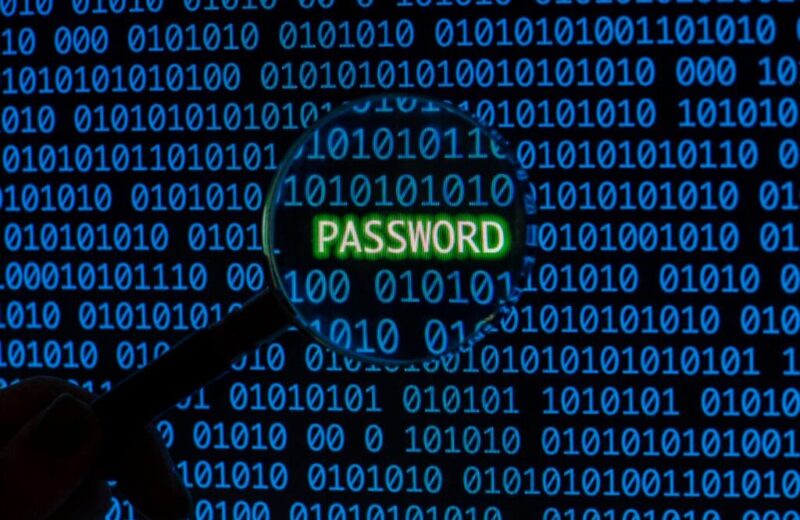Table of content
TL;DR: Cyber threats for small business owners are rising sharply, with 43% of all cyberattacks now targeting SMEs. This guide covers the top five threats – advanced phishing, ransomware-as-a-service, AI-powered attacks, supply chain vulnerabilities, and IoT/cloud breaches – plus actionable strategies, policies, and solutions to protect your business.
The Growing Cybersecurity Challenge for SMEs
The digital landscape continues to evolve, and with it, cyber threats to small businesses are becoming increasingly sophisticated and dangerous. Small and medium enterprises (SMEs) face an unprecedented challenge in securing their operations against cybercriminals who view them as easy targets.
Recent UK data shows that 25% of small businesses reported cyber crime in the last 12 months, and over 40% say they’ve experienced a breach – some costing upwards of £7,900.
UK Cybersecurity Landscape in 2025
According to the UK National Cyber Security Centre (NCSC), the threat landscape for British businesses has intensified significantly. The financial implications are staggering.

The World Economic Forum estimates that cybercrime could cost organisations up to £27 billion annually by 2026, underscoring the growing financial pressure on companies of all sizes. Meanwhile, the Verizon Data Breach Investigations Report (DBIR) highlights that 46% of all breaches in 2024 targeted businesses with fewer than 1,000 employees, demonstrating the sustained vulnerability of SMEs.
Recent UK incidents further illustrate this reality. High-profile cases such as the M&S cyberattack, where sensitive customer data was exposed, show how even established brands remain at risk. Similarly, logistics providers have become frequent targets, as seen in the KNP Logistics cyber attack, which disrupted operations and highlighted the compounding risks of supply-chain vulnerabilities.
For small businesses in particular, a single successful attack can be the difference between survival and closure, making proactive cybersecurity measures essential. Strengthening defences and addressing technical debt management can help organisations maintain secure, resilient, and future-ready systems.
Top 5 Cyber Threats for Small Businesses in 2025
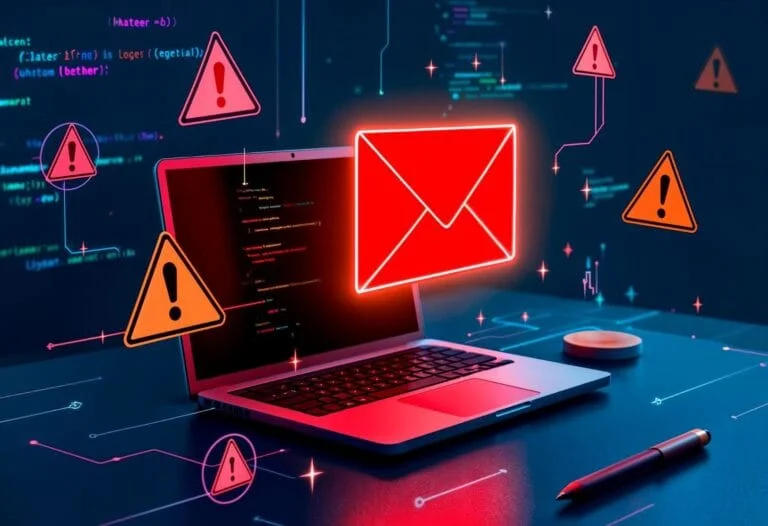
1. Advanced Phishing and Social Engineering Attacks
Phishing and social engineering attacks have evolved far beyond the crude, easily identifiable scam emails of the past. These attacks are among the most serious cyber threats small businesses face today, blending psychological manipulation with advanced technology to deceive even vigilant employees.
Modern phishing campaigns leverage artificial intelligence to create highly personalised and convincing communications. These attacks often impersonate trusted vendors, clients, or even internal colleagues, making them incredibly difficult to detect. According to the FBI’s Internet Crime Complaint Centre (IC3), phishing and social engineering attacks rank among the most common cyber threats for small businesses in 2025. In these attacks, cybercriminals try to deceive you or your team into disclosing sensitive information, such as credit card details, social security numbers, and passwords.
The sophistication of these attacks extends beyond email. Vishing (voice phishing), smishing (SMS phishing), and even deepfake technology are being employed to create multi-channel attack strategies. Cybercriminals research their targets extensively using social media, company websites, and public records to craft messages that appear legitimate and urgent.
Examples of cyber attacks on small businesses through phishing include:
- Business Email Compromise (BEC): Attackers impersonate executives to authorise fraudulent wire transfers
- Credential Harvesting: Fake login pages that steal username and password combinations
- Malware Distribution: Seemingly innocent attachments that install ransomware or spyware
- Invoice Fraud: Fake invoices from supposed vendors requesting payment to different accounts
Small businesses are particularly vulnerable because they often lack comprehensive security awareness training programmes. A single employee clicking on a malicious link can compromise the entire network, leading to data breaches, financial losses, and reputational damage.
The NCSC reports that phishing attacks targeting UK SMEs increased by 24% in 2024, with business email compromise schemes alone costing UK businesses over £470 million annually.
2. Ransomware-as-a-Service (RaaS) Evolution
Ransomware attacks have undergone a dangerous evolution with the rise of Ransomware-as-a-Service (RaaS) models. This commoditisation of ransomware has dramatically lowered the barrier to entry for cybercriminals, resulting in a surge of attacks targeting SMEs and representing a critical category of cyber threats for small businesses. The CISA Ransomware Guide provides comprehensive resources for businesses to understand and defend against these threats.
RaaS platforms operate like legitimate software services, complete with customer support, user manuals, and even money-back guarantees. This professionalisation has made ransomware attacks more accessible and more effective. Criminal organisations develop sophisticated ransomware tools and lease them to affiliates who carry out the actual attacks, creating a disturbing ecosystem of cybercrime.
The impact on small businesses is devastating. In 2021, 37% of ransomware attacks were on companies with fewer than 100 employees. According to the Verizon DBIR 2024, ransomware now accounts for 24% of all breaches affecting SMEs, with the average downtime lasting 21 days. Unlike large corporations with dedicated IT security teams and extensive backup systems, SMEs often lack the resources to quickly recover from ransomware attacks.
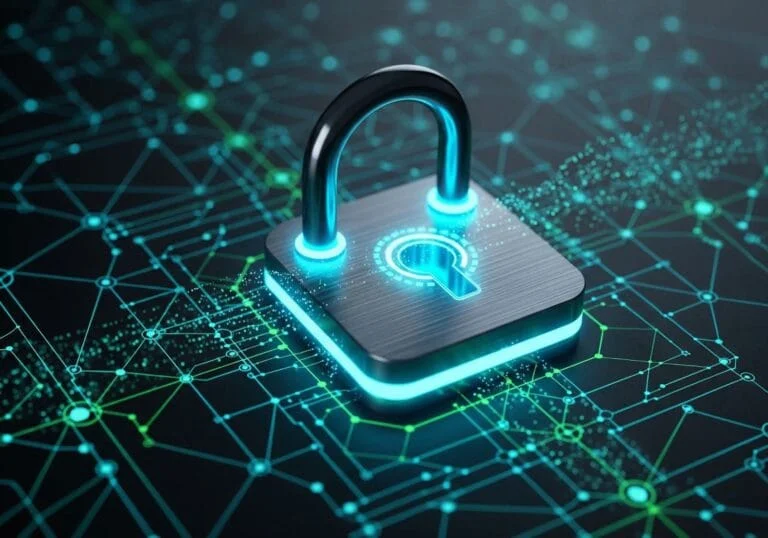
Modern ransomware doesn’t just encrypt files; it employs double and triple extortion tactics:
- Double Extortion: Steal data before encryption and threaten to publish it if the ransom isn’t paid
- Triple Extortion: Add DDoS attacks and contact the victim’s customers or partners directly
- Supply Chain Targeting: Attack managed service providers to reach multiple SME clients simultaneously
The most common forms of ransomware attacks against small businesses are:
- Phishing: Scam emails and text messages that trick users into supplying passwords and login credentials
- Malicious email attachments: Emails with attachments that contain malware
- Drive-by attacks: Malware downloaded through compromised websites
The financial impact extends beyond ransom payments. Businesses face operational downtime, data recovery costs, legal fees, regulatory fines, and long-term reputational damage. Many SMEs that experience ransomware attacks never fully recover their previous levels of operation.
The NCSC advises that UK SMEs should prioritise ransomware defences, as attacks increased by 33% year-over-year in 2024, making ransomware one of the most critical cyber threats for small business operations.
3. AI-Powered Cyber Attacks
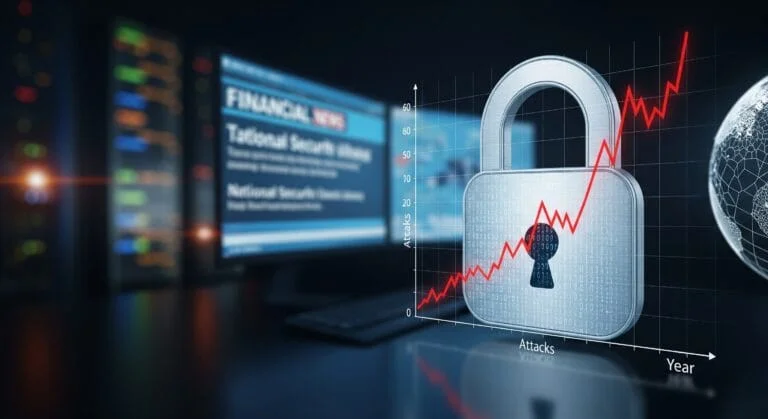
Artificial Intelligence has become a double-edged sword in cybersecurity. While it offers powerful defensive capabilities, cybercriminals are increasingly leveraging AI to enhance their attack methodologies. This represents one of the most concerning cyber threats for small businesses.
AI-powered attacks are characterised by their ability to learn, adapt, and scale at unprecedented levels. Machine learning algorithms can analyse vast amounts of data to identify vulnerabilities, craft personalised phishing messages and even automate the entire attack process. These systems can operate 24/7, continuously probing defences and adjusting tactics based on responses.
Key characteristics of AI-powered cyber threats for small businesses include:
- Automated Vulnerability Discovery: AI systems can scan networks and identify weaknesses faster than human analysts
- Dynamic Phishing Content: Machine learning creates personalised phishing messages that adapt based on target responses
- Behavioural Mimicry: AI can learn normal user behaviour patterns and mimic them to avoid detection
- Password Cracking: Advanced algorithms can break passwords using pattern recognition and predictive modelling
Small businesses are particularly vulnerable because their security systems often lack the AI-powered defences necessary to combat these sophisticated attacks. While large corporations invest in advanced AI-driven security systems, SMEs often depend on traditional measures that are no longer effective against emerging cyber threats for small businesses.
The speed and scale of AI-powered attacks mean that SMEs have little time to respond once an attack begins. These systems can compromise networks, steal data, and deploy ransomware attacks in minutes rather than the hours or days required by human attackers.
According to the World Economic Forum (WEF), 81% of cybercriminals now use AI-powered tools to enhance attack effectiveness, making this one of the fastest-growing cyber threats for small businesses globally.
4. Supply Chain Vulnerabilities
Supply chain attacks have emerged as one of the most insidious cyber threats for small businesses. These attacks target the interconnected web of vendors, suppliers, and service providers that modern businesses depend on. By compromising a single supplier, cybercriminals can potentially access hundreds or thousands of downstream businesses.
According to industry research, SMBs are most vulnerable to supply chain attacks. This vulnerability stems from the fact that small businesses often have limited resources to thoroughly vet their suppliers’ security practices. They may use software, services, or hardware from vendors without fully understanding the security implications. The NIST Cybersecurity Supply Chain Risk Management framework provides guidance for managing these risks effectively.
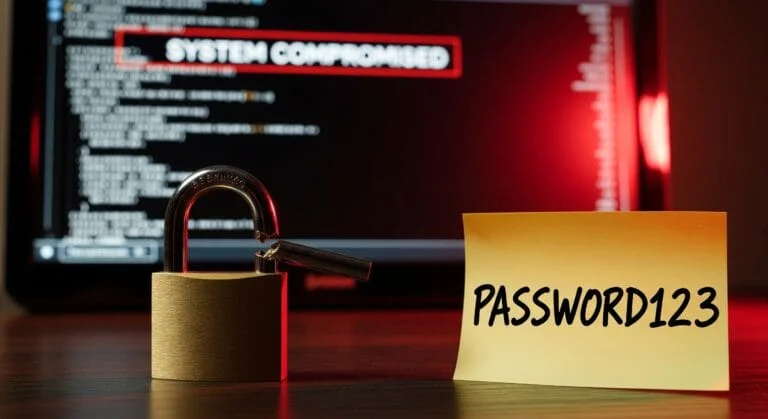
Supply chain attacks targeting SMEs typically follow these patterns:
- Software Supply Chain: Compromising software updates or plugins used by multiple businesses
- Managed Service Provider (MSP) Attacks: Targeting IT service providers to access their client networks
- Hardware Implants: Installing malicious components in devices before they reach end users
- Third-Party Integration: Exploiting vulnerabilities in third-party services integrated into business systems
The challenge for SMEs is that these attacks often appear legitimate. A software update from a trusted vendor or a service request from a familiar MSP can be a vector for attack. The sophisticated nature of these attacks means they can remain undetected for months or even years.
Examples of cyber attacks on small businesses through supply chain vulnerabilities include:
- The SolarWinds attack, which affected thousands of organisations globally
- Breaches of Managed Service Providers (MSPs) that granted attackers simultaneous access to numerous small business networks
- The Target data breach, which began through a third-party HVAC vendor and resulted in the theft of 40 million credit card numbers
- The Kaseya ransomware attack, where REvil exploited Kaseya’s software platform to infect over 1,000 businesses worldwide
These incidents highlight how interconnected systems can serve as entry points for widespread compromise. Businesses can learn valuable lessons from the recent M&S cyberattack and the KNP Logistics cyberattack, both of which highlight the financial and operational impact of weak security measures.
The Verizon DBIR reports that 62% of UK businesses experienced supplier-related security incidents in 2024, making supply chain vulnerabilities among the most pressing cyber threats for small businesses today.
5. IoT and Cloud Security Breaches
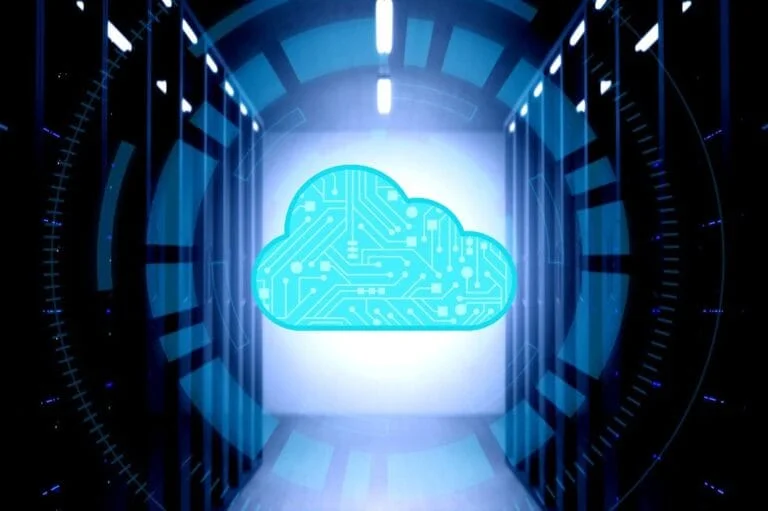
The proliferation of Internet of Things (IoT) devices and cloud services has created new attack surfaces for cybercriminals to exploit. As SMEs increasingly adopt smart office equipment, cloud-based software, and remote work technologies, they inadvertently expand their potential vulnerability to cyber threats for small businesses.
IoT devices often ship with default passwords, infrequent security updates, and minimal built-in security features. These devices can serve as entry points for attackers to access broader network resources.
Common IoT vulnerabilities in SME environments include:
- Smart Office Equipment: Printers, cameras, and HVAC systems with network connectivity
- Bring Your Own Device (BYOD): Personal smartphones and tablets accessing business networks
- Industrial IoT: Manufacturing equipment with internet connectivity
- Smart Building Systems: Security systems, lighting controls, and environmental monitoring
Cloud security breaches represent another significant concern. While cloud providers invest heavily in security, the responsibility for properly configuring and managing cloud resources often falls to the customer. SMEs may lack the expertise to properly secure their cloud deployments, leading to misconfigurations that expose sensitive data.
The NCSC reports that misconfigured cloud services were responsible for 34% of data breaches affecting UK SMEs in 2024, highlighting the growing risk of IoT and cloud-related cyber threats for small businesses.
The convergence of IoT and AI creates particularly dangerous scenarios where compromised devices can be used to launch intelligent, adaptive attacks. The IoT Security Foundation provides valuable resources for securing connected devices in business environments.
Examples of Cyber Attacks on Small Businesses
Understanding real-world examples helps illustrate the tangible impact of cyber threats on small businesses. Recent high-profile incidents demonstrate how even well-established companies can fall victim to sophisticated attacks.:
KNP Logistics / Knights of Old
- In June 2023, KNP Logistics, the parent of the 158-year-old “Knights of Old” haulage company, suffered a ransomware attack.
- The attackers used a weak password to gain access, encrypted systems, and demanded a ransom, which the company couldn’t recover from, leading to administration and around 700 job losses.
- This case is often cited as a stark example that even long-established small-to-medium firms with cyber insurance are at serious risk.
Broad SME Risk Trend (Hiscox Report)
- According to Hiscox’s Cyber Readiness Report, 59% of UK SMEs reported experiencing a cyber-attack in the last 12 months.
- About a third (33%) of those surveyed SMEs said they were hit with a “substantial fine” after a breach.
Macro Cost to SMEs
- Vodafone Business estimates that cyber-hackers are costing UK SMEs about £3.4 billion annually.
- They also report that the average cost of a cyber-attack for a small business in the UK is between £3,398 and £5,001, depending on size.
Increased Scanning & Targeting
- According to BT, UK small businesses are now under much more intense scrutiny: “networked devices at UK organisations … face over 4,000 automated scans daily by hackers.”
- BT also warns that only 3 in 5 SMEs have had cybersecurity training, making them prime targets.
SME Cybersecurity Guidance
- The UK’s National Cyber Security Centre (NCSC) provides a Small Business Guide that outlines key risks (phishing, ransomware, etc.) and practical steps for SMEs to protect themselves.
These examples underscore the diverse nature of cyber threats for small businesses and the importance of comprehensive security strategies.
Cybersecurity Policy for Small Businesses
Developing a comprehensive cybersecurity policy for small businesses is essential for protecting against evolving cyber threats for small businesses. A well-crafted policy serves as the foundation for all security activities and helps ensure consistent application of security measures across the organisation. The SANS Institute offers comprehensive policy templates and guidance for organisations of all sizes.
Essential Components of a Cybersecurity Policy
A robust cybersecurity policy for small businesses should address the following key areas:
Access Control and Authentication
- Mandatory multi-factor authentication for all business accounts
- Regular password updates with complex password requirements
- Role-based access controls limit system access based on job responsibilities
- Immediate access revocation procedures for departing employees
Data Protection and Classification
- Clear data classification schemes (public, internal, confidential, restricted)
- Encryption requirements for data at rest and in transit
- Data retention and disposal procedures
- Regular data backup and recovery testing protocols
Email and Communication Security
- Guidelines for identifying and reporting phishing and social engineering attempts
- Restrictions on opening email attachments from unknown sources
- Secure communication protocols for sensitive information
- Social media usage guidelines for business-related communications
Incident Response Procedures
- Clear escalation procedures for suspected security incidents
- Contact information for law enforcement, legal counsel, and cybersecurity experts
- Communication protocols for notifying customers, partners, and regulators
- Business continuity procedures for maintaining operations during incidents
Employee Training and Awareness
- Regular cybersecurity awareness training programs
- Phishing and social engineering simulation exercises
- Clear consequences for policy violations
- Ongoing education about emerging cyber threats for small businesses
Implementation Best Practices
Creating a cybersecurity policy for a small business is only the first step; effective implementation requires ongoing commitment and resources.
- Leadership Commitment: Senior management must champion cybersecurity initiatives and allocate necessary resources
- Regular Updates: Policies must evolve to address new cyber threats for small businesses and changing business requirements
- Employee Engagement: Staff must understand not just what to do, but why cybersecurity matters to business success
- Regular Testing: Policies should be tested through simulations and exercises to identify gaps and areas for improvement
Best Cybersecurity Solutions for Small Businesses
Selecting the best cybersecurity solutions for small businesses requires balancing effectiveness, cost, and usability. SMEs need solutions that provide enterprise-level protection without the complexity and expense associated with large corporate security systems.
Essential Security Technologies
- Endpoint Detection and Response (EDR): Modern EDR solutions provide comprehensive protection against ransomware attacks and other malware by continuously monitoring endpoint activities and responding to threats in real-time. These solutions use behavioural analysis to detect suspicious activities that might indicate compromise.
- Email Security Gateways: Given that phishing and social engineering attacks frequently begin with malicious emails, robust email security is crucial. Advanced email security solutions use machine learning to identify and block sophisticated phishing attempts before they reach users’ inboxes.
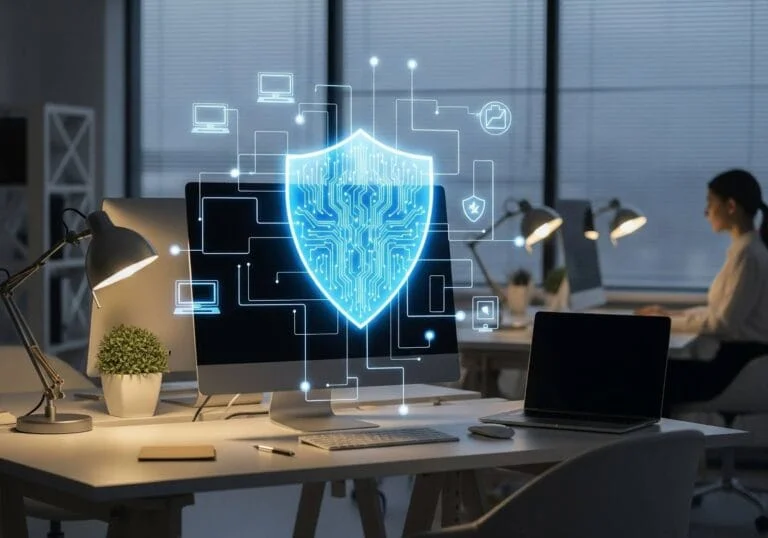
- Network Segmentation and Monitoring: Network segmentation limits the potential impact of successful attacks by containing breaches within specific network segments. Continuous network monitoring helps identify unusual activities that might indicate ongoing attacks.
- Cloud Security Solutions: As SMEs increasingly adopt cloud services, cloud security posture management (CSPM) tools help ensure proper configuration and compliance with security best practices.
- Backup and Recovery Solutions: Comprehensive backup strategies with air-gapped storage provide essential protection against ransomware attacks. Modern solutions include automated testing of backup integrity and rapid recovery capabilities.
Managed Security Services
Many SMEs lack the internal expertise to effectively manage cybersecurity technologies. Managed Security Service Providers (MSSPs) offer access to expert security capabilities at a fraction of the cost of building internal teams.
Key benefits of managed security services include:
- 24/7 monitoring and incident response capabilities
- Access to threat intelligence and security expertise
- Regular security assessments and compliance reporting
- Cost-effective access to enterprise-level security technologies
When evaluating MSSPs, consider their experience with businesses similar to yours, their incident response capabilities, and their ability to provide clear, actionable security reporting. If you’re looking to strengthen your company’s security posture, RSVR’s cybersecurity services can help design tailored, end-to-end protection strategies against cyber threats for small businesses.
Cyber Security Best Practices for Business
Implementing cybersecurity best practices for business creates multiple layers of defence against cyber threats for small businesses. These practices should be integrated into daily operations and reinforced through regular training and awareness programs.
Fundamental Security Practices
- Regular Software Updates and Patch Management: Maintaining current software versions is one of the most effective defences against cyberattacks. Cybercriminals frequently exploit known vulnerabilities in outdated software to gain initial access to business networks. The CVE Database maintains a comprehensive list of known cybersecurity vulnerabilities that businesses should monitor and address promptly.
- Establish automated update procedures for operating systems and applications.
- Prioritise security patches and apply them within 72 hours of release
- Maintain an inventory of all software and hardware assets
- Implement testing procedures for critical updates before deployment

Strong Authentication Mechanisms: Multi-factor authentication (MFA) significantly reduces the risk of account compromise, even when passwords are stolen through phishing and social engineering attacks.
- Require MFA for all business-critical applications and systems
- Use hardware security keys for the highest level of protection
- Implement single sign-on (SSO) solutions to reduce password fatigue
- Regularly review and update access permissions based on job responsibilities
Employee Security Awareness: Employees represent both the greatest vulnerability and the strongest defence against cyber threats for small businesses. Comprehensive security awareness programmes help staff recognise and respond appropriately to potential threats.
- Conduct monthly security awareness training sessions.
- Perform regular phishing and social engineering simulation exercises
- Create clear reporting procedures for suspicious activities
- Recognise and reward employees who demonstrate good security practices
Data Backup and Recovery Planning: Robust backup strategies provide essential protection against ransomware attacks and other data loss scenarios. Effective backup programmes follow the 3-2-1 rule: three copies of data, on two different media types, with one copy stored offline.
- Implement automated backup procedures for critical business data
- Test backup integrity and recovery procedures monthly
- Maintain air-gapped backup copies that cannot be accessed remotely
- Document and regularly test business continuity procedures
Advanced Security Measures
Network Security Architecture: Implementing defence-in-depth network security provides multiple barriers against successful attacks:
- Deploy next-generation firewalls with intrusion prevention capabilities
- Implement network access control (NAC) to manage device connections
- Use virtual private networks (VPNs) for remote access
- Monitor network traffic for unusual patterns or unauthorised activities
Incident Response Planning: Despite best efforts, security incidents will occur. Effective incident response minimises damage and accelerates recovery:
- Develop written incident response procedures
- Identify key personnel and their responsibilities during incidents
- Establish communication protocols for internal and external stakeholders
- Conduct regular tabletop exercises to test response procedures
Understanding the cyber kill chain framework helps businesses recognise attack patterns and implement defensive measures at each stage of potential cyber threats for small businesses.
Small Business Cyber Security Checklist
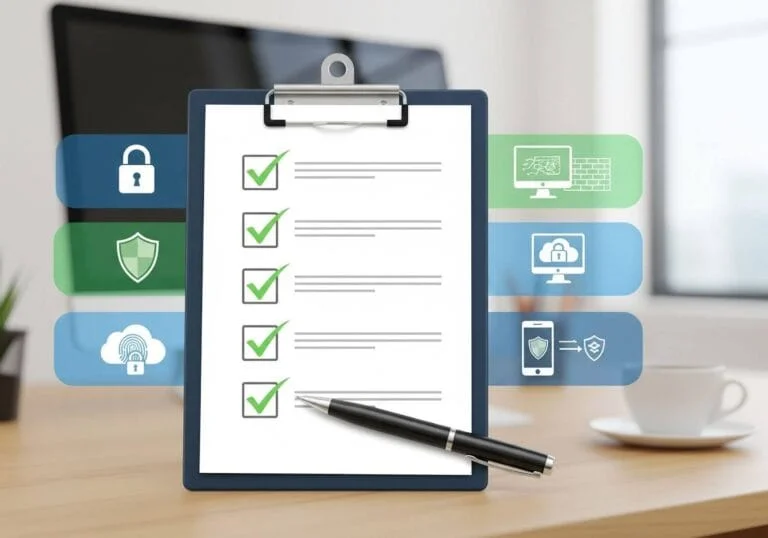
This comprehensive small business cybersecurity checklist provides actionable steps to protect against cyber threats for small businesses. Use this checklist to assess your current security posture and identify areas requiring attention.
1. Immediate Actions (Complete Within 30 Days)
Authentication and Access Control
- Enable multi-factor authentication on all business accounts
- Change all default passwords on devices and applications
- Review and update user access permissions
- Remove access for former employees immediately
- Implement password managers for all staff
Basic Security Measures
- Install and configure endpoint protection on all devices
- Enable automatic software updates where possible
- Configure firewalls on all network entry points
- Set up secure email gateways to filter malicious messages
- Implement basic network monitoring capabilities
Data Protection
- Identify and classify critical business data
- Implement encryption for sensitive data storage
- Configure automated backup procedures
- Test data recovery procedures
- Establish data retention and disposal policies
2. Medium-Term Improvements (Complete Within 90 Days)
Policy Development
- Create a comprehensive cybersecurity policy for a small business
- Develop incident response procedures
- Establish vendor security requirements
- Create an employee security awareness training programme
- Document business continuity procedures
Advanced Security Controls
- Implement network segmentation where appropriate
- Deploy endpoint detection and response (EDR) solutions
- Establish security information and event management (SIEM) capabilities
- Implement privileged access management (PAM) for administrative accounts
- Configure regular vulnerability scanning
Training and Awareness
- Conduct initial security awareness training for all employees
- Perform phishing and social engineering simulation exercises
- Establish security incident reporting procedures
- Create security awareness communication programmes
- Develop role-specific security training modules
3. Ongoing Security Activities (Continuous)
Regular Assessments
- Conduct monthly security awareness training
- Perform quarterly phishing and social engineering simulations
- Complete annual risk assessments
- Review and update security policies semi-annually
- Conduct annual penetration testing or security assessments
Monitoring and Maintenance
- Monitor security logs and alerts daily
- Review access permissions monthly
- Test backup and recovery procedures monthly
- Update threat intelligence sources regularly
- Maintain vendor security relationships and communications
This small business cybersecurity checklist should be customised based on your specific business requirements, industry regulations, and risk tolerance. Regular review and updates ensure continued effectiveness against evolving cyber threats for small businesses.
How RSVR Can Help Secure Your Business
Understanding the scale and severity of cyber threats for small businesses is just the beginning – taking action is what drives real protection. That’s where RSVR Technologies comes in.
About RSVR Technologies
RSVR Tech delivers clear, effective cybersecurity for growing businesses. We help startups and SMEs protect sensitive data, secure cloud environments, and strengthen resilience with solutions that scale as they grow. Our focus is simple: practical, outcome-driven security without the jargon.
Our Comprehensive Cybersecurity Services
Our cybersecurity services offering includes services tailored to companies that want visibility, resilience, and clarity, without complexity:
- Vulnerability Assessment & Penetration Testing (VAPT)
Simulate real-world attacks to uncover weaknesses before hackers do. Our four-phase VAPT process includes reconnaissance, scanning, exploitation, and remediation, with free retesting. This is especially valuable for businesses preparing for compliance or funding rounds.
- Cyber Risk Assessment
Understand where your business is most exposed to cyber threats for a small business. We assess risk across infrastructure, tools, users, and processes – then provide a clear plan of action to strengthen your cybersecurity posture.
- Network Security
Shield internal systems and prevent unauthorised access at the architectural level. As a key part of cybersecurity for businesses, this ensures foundational protections are in place.
- Cloud Security Services
Whether you’re on AWS, Azure, or GCP, we implement cloud-native protections tailored to your stack, ideal for cybersecurity for cloud-native businesses.
- Endpoint Protection
Safeguard employee devices from phishing, malware, and zero-day threats with lightweight, enterprise-grade tools.
- Security Engineering Services
From IAM architecture to zero trust implementation, we offer technical support that aligns with your growth.
- Compliance Support
Navigate ISO, SOC 2, and industry-specific frameworks with audit-ready policies and technical controls.
- Awareness Training
Empower your team with simple, effective training modules that turn your people into your first line of defence against cyber threats for small businesses.
When to Prioritise Cybersecurity
If your business is:
- Launching a new product or platform
- Preparing for funding or due diligence
- Managing sensitive customer data
- Expanding to a remote or hybrid workforce
- Scaling cloud infrastructure
… then it’s time to embed cybersecurity for businesses into your roadmap.
Don’t wait until after the breach. A proactive approach to cybersecurity for businesses ensures resilience, compliance, and peace of mind.
With RSVR as your cybersecurity partner, you’ll spend less time managing threats and more time growing confidently.
Book a Call
Whether you’re securing a new product, upgrading your infrastructure, or recovering from a breach, RSVR Technologies can help you move forward with confidence.
Book a call with us today and discover how to build a more resilient, secure future for your business.
Conclusion
Cybersecurity in 2025 presents real and escalating risks for SMEs, but the strongest defence lies in being proactive rather than reactive. By focusing on the fundamentals – strengthening password and access controls, training staff to handle phishing and social-engineering attempts, keeping software and devices updated, securing cloud setups, backing up critical data, and preparing an incident-response plan – small businesses can dramatically reduce their exposure.
The core message is simple: investing in preventive security measures is far more cost-effective than dealing with a breach. With the right safeguards in place – and support from trusted partners like RSVR Technologies – SMEs can stay secure, resilient, and confident as the threat landscape continues to evolve.
Key Takeaways
- 43% of all cyberattacks target small businesses, making them prime targets for cybercriminals
- Ransomware-as-a-Service (RaaS) has lowered barriers to entry
- AI-powered cyber threats enable attackers to scale, adapt, and automate attacks at unprecedented levels
- Supply chain attacks have emerged as a critical vulnerability, with 60% of UK businesses experiencing supplier-related incidents
- Multi-factor authentication (MFA) and regular security training remain the most effective defences against cyber threats for small businesses
- Implementing a comprehensive cybersecurity policy and following best practices can reduce breach risk
Frequently Asked Questions (FAQs)
What is the most common cyber attack on small businesses?
Phishing and social engineering are the most common attacks on SMEs. Verizon DBIR data shows phishing drives 17% of breaches and often acts as the entry point for ransomware, credential theft, and financial fraud. These attacks work because they exploit human error rather than technical flaws.
What is a threat to small businesses?
Cyber threats to SMEs include phishing, ransomware, AI-driven attacks, supply chain compromises and IoT/cloud breaches. Criminals often target small businesses because they typically have weaker defences and limited cybersecurity resources.
What are the top 5 major threats to cybersecurity?
The top 5 SME cyber threats in 2025 are:
- Advanced phishing & social engineering
- Ransomware-as-a-Service (RaaS): Up 33% in 2024 (NCSC). RaaS is a subscription model where criminals rent ransomware to less-skilled attackers.
- AI-powered attacks: 81% of attackers now use AI (WEF).
- Supply chain vulnerabilities: 62% of UK businesses had supplier-related incidents (DBIR).
- IoT & cloud security gaps: Misconfigurations and weak device security.
What are the 8 main cybersecurity threats?
The eight major cyber threats are:
- Phishing/social engineering
- Ransomware
- Malware/viruses
- DDoS attacks
- Data breaches
- Insider threats
- Supply chain attacks
- Advanced persistent threats (APTs)
What are the most common cyber threats faced by small businesses in the UK?
NCSC reports that UK SMEs mainly face:
- Ransomware (33% of incidents)
- Password attacks from weak credentials
- Supplier compromises (60% affected)
- Cloud misconfigurations leading to data leaks
These align with global FBI IC3 trends but carry higher stakes in the UK due to strict GDPR rules and tighter data-handling obligations, which increase both compliance risks and potential penalties.
What cybersecurity standards or certifications should SMEs follow in the UK?
Key UK standards include:
- Cyber Essentials / Cyber Essentials Plus – NCSC-backed baseline security
- GDPR compliance – mandatory for personal data handling
- ISO 27001 – international security management standard
Industry-specific options: PCI DSS (payments), FCA rules (finance), SOC 2 (cloud services).
NCSC’s 10 Steps to Cyber Security offers practical UK-focused guidance.
What is the first thing to do if my business suffers a cyberattack?
Immediately:
- Isolate affected systems – disconnect but don’t power off.
- Activate your incident response plan.
- Preserve evidence – logs, timestamps, screenshots.
- Assess impact – systems, data, customers.
Within 24 hours: - Report to Action Fraud, NCSC, ICO (if personal data affected)
- Notify your cyber insurance provider.
Avoid deleting files, paying ransoms immediately, or communicating on compromised devices.
Understanding the cyber kill chain helps identify which stage of the attack you’re experiencing and how to effectively disrupt it.
Should I pay the ransom if my files are locked by ransomware?
Generally, no. NCSC and FBI advise against paying because:
- 40% of businesses never get working decryption keys
- It funds criminal activity.
- It marks your business as a future target.
- Data may still be stolen or leaked.
Payment might be considered only if no backups exist and the business cannot operate.
The better strategy: strong backups (3-2-1 rule), MFA, email filtering, employee training, and EDR tools.
Real-world cases like the KNP Logistics cyber attack demonstrate both the devastating impact of ransomware and the importance of preparation.
Final Recommendation: Invest in prevention and preparation rather than gambling on ransom payment. If you find yourself in this situation, contact professionals immediately – including law enforcement, cybersecurity specialists, and legal counsel – before making any payment decisions.







